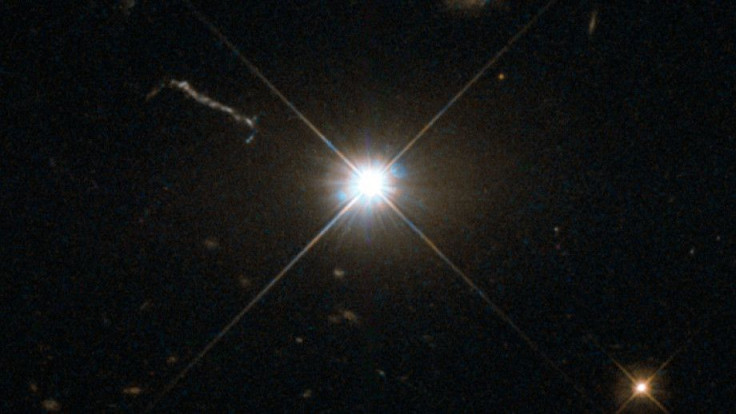Fastest-Growing ‘Monster’ Black Hole Discovered, Can Devour Sun Every Two Days

A group of astronomers hailing from Australia have discovered the fastest-growing black hole in the universe, a cosmic monster that can devour mass equivalent to our sun every two days.
The supermassive black hole was found after astronomers peered back into the age of the early universe, some 12 billion years ago. Light can take millions to billions of years to travel depending on the distance between Earth and a distant point in space, which means objects seen at present would appear as they were several eons ago.
In this case, the researchers discovered the black hole which, according to their estimates, was as big as 20 billion suns and growing by a percent every one million years.
"This black hole is growing so rapidly that it's shining thousands of times more brightly than an entire galaxy, due to all of the gases it sucks in daily that cause lots of friction and heat," Christian Wolf from the Research School of Astronomy and Astrophysics at Australian National University (ANU) and a member of the team behind discovery said in a statement.
"If we had this monster sitting at the centre of our Milky Way galaxy, it would appear 10 times brighter than a full moon,” Wolf added. “It would appear as an incredibly bright pin-point star that would almost wash out all of the stars in the sky."
However, the researcher also noted that humans would not have been around to see that pin-point in that case, because the X-rays emanating out from the monster would have meant the end of all life on Earth.
Luckily, the black hole sits far beyond. This also helped with its detection as light waves from the black hole red-shifted during their long journey to Earth, allowing the astronomers to use ANU’s SkyMapper telescope to detect them in near-infrared.
"As the Universe expands, space expands and that stretches the light waves and changes their color," Wolf added.
The find, which came after months of months of SkyMapper scanning, was further confirmed by European Space Agency’s Gaia satellite. It measures tiny movements in deep-space celestial objects and was able to determine that the object discovered by the team at ANU was sitting still and is likely to be a supermassive black hole.
Though the team has no idea how this monstrous black hole grew so big when the universe was still in its infancy, they plan to continue their search for other fast-growing black holes, possibly faster than this one, in the universe. They believe objects like these are extremely rare but could be the key to gain more insight into the beginning and expansion of our universe.
That said, they think improving technology and advanced ground-based telescopes coming over the next decade should be able to leverage black holes like these to understand how our universe has been growing.
The study, titled “Discovery of the most ultra-luminous QSO using Gaia, SkyMapper, and WISE,” will be detailed in Publications of the Astronomical Society of Australia and the arXiv preprint is available online.
© Copyright IBTimes 2025. All rights reserved.




















